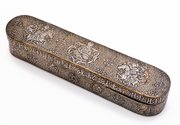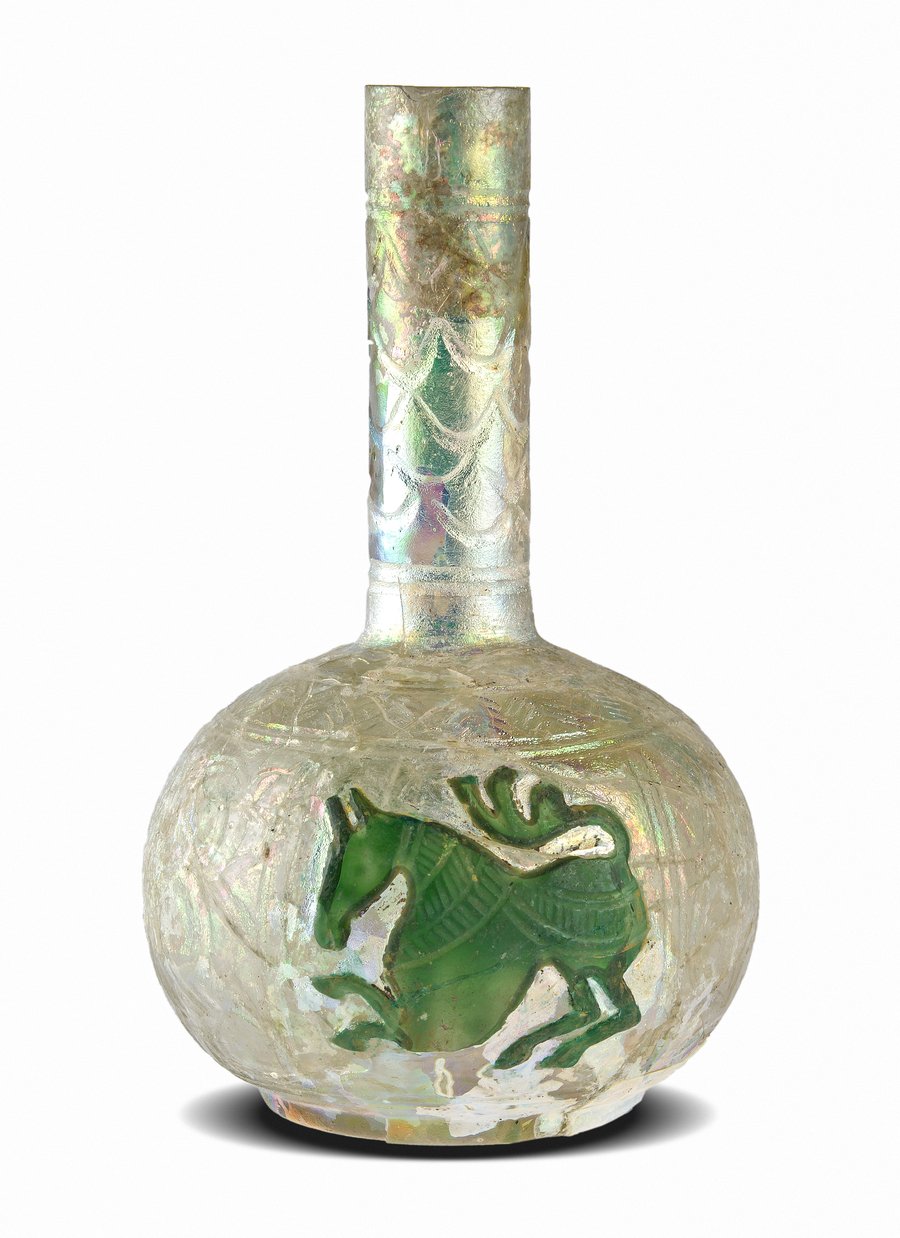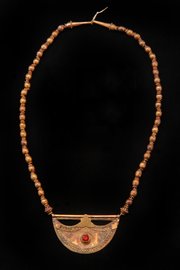
Cut Glass Bottle with Cameo Decoration
Museum of Islamic Art
- Title:
- Cut Glass Bottle with Cameo Decoration
- Production place:
- Iran
- Date:
- 873 - 999
- Period:
- Saffarid
- Title:
- Cut Glass Bottle with Cameo Decoration
- Production place:
- Iran
- Date:
- 873 - 999
- Period:
- Saffarid
- Material:
- Glass
- Technique:
- Glassblowing, Cameo glass, Wheel cutting, Engraving
- Dimensions:
- 17.1 cm
- Diameter:
- 10.2 cm
This bottle reflects the syncretism between traditions of late antiquity and technical innovations of the early Islamic period. Glass cutting into the surface was a widely distributed technique from Egypt to Iran, between the 2nd and 4th century AH/8th and the 10th century CE and cameo glass carving was a technique particularly developed and appreciated across the Roman empire. However, unlike Roman cameo glass encasing other pieces of glass into the main body, this bottle bears two applied layers of green glass cut into the shape of two horses. Other animals like hares, lions or birds can commonly be used to decorate applied glass. The piece is also covered with incised decoration that combine geometric motifs and a fish-scale pattern, thus revealing the contrast between the colours of the different layers of glass alongside the obvious mastering of the craftsman. A similar bottle with globular body and a green cameo carved decoration of a running hare and an unidentified animal with a fluffy tail is in the collection of the British Museum (1967, 1211.1). Dated to the 3rd-4th century AH/9th-10th century CE, it was excavated in Nishapur, present-day northeastern Iran.



